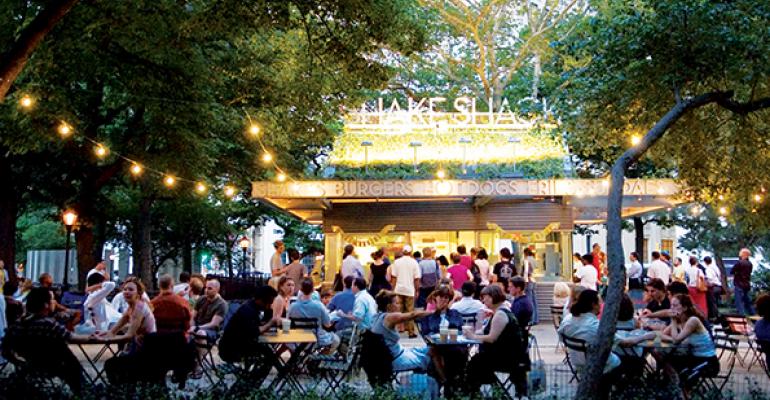The upcoming IPO for better-burger chain Shake Shack could be the biggest initial public offering in restaurant history.
Plenty of people think that. The company’s high-volume locations, its hometown near Wall Street and the credibility of its management all make for a potentially huge opening. It may not be a question of whether Shake Shack’s offering outdoes those from Chipotle Mexican Grill Inc., Potbelly Corp. and Habit Burger Grill parent The Habit Restaurants Inc., but by how much.
Shake Shack aims to raise $100 million in its IPO, and could receive a valuation of $1 billion. That’s astounding for a 63-unit concept, but it’s not unprecedented. Chicago-based Portillo’s, with 38 locations, was reportedly valued at nearly $1 billion in a deal last year.
The environment is friendly for IPOs, and investors are willing to fork over exceedingly strong valuations to small, up-and-coming concepts. Over the past two years, restaurant offerings have had first-day pops of nearly 70 percent.
Shake Shack is well known for a small concept — The Daily Meal ranked it No. 11 on its 101 Best Restaurants in America list in 2013 — thanks in part to social media, its New York location and the popularity of burgers. Its SEC filing noted that the concept has an “outsized brand awareness.”
Shake Shack’s brand awareness alone should interest plenty of investors in its IPO. It doesn’t hurt that many New York fund managers lunch there all the time, thanks to its Manhattan stronghold.
Those investors would also get stock in a profitable, fast-growing chain with high volumes in a strong market.
Shake Shack has grown significantly in recent years. Systemwide sales rose from $21 million in 2010 to $140 million in 2013. The company also plans to add at least 10 locations a year domestically, many in existing markets like New York, Washington, D.C., Philadelphia, Chicago, Boston and South Florida, and it is eyeing the Austin, Texas, market.
More importantly, the company anticipates strong unit volumes. Shake Shack projects volumes of $2.8 million to $3.2 million, according to SEC filings. Those are high unit volumes for a limited-service chain — greater than traditional high-volume concepts such as McDonald’s, Panera Bread and Chipotle.
In fact, those figures are smaller than Shake Shack’s current domestic unit volumes of $5 million. However, much of that comes from its Manhattan locations, which have astounding volumes of $7.4 million. Non-Manhattan locations have unit volumes of $3.8 million. Rapid growth often leads to smaller volumes as customers seek other locations.
Shake Shack has also seen same-store sales rise, though growth slowed to 3 percent in the first nine months of 2014, from 5.5 percent during the same period in 2013. In 2012, the company’s same-store sales rose 7.1 percent, according to SEC documents.
The company had restaurant-level operating profit of 24.7 percent in the first nine months of 2014, according to SEC filings.
That has generated good — but not great — returns for the company’s locations outside of Manhattan, where a new Shake Shack can pay itself off in 1.2 years, according to SEC documents.
Non-Manhattan locations have cash-on-cash returns of 31 percent, roughly average for a fast-casual concept. Therefore, it takes 3.2 years for those new units to pay off their initial investment. That’s well below the returns of lower-volume Chipotle restaurants — which have volumes just under $2.2 million and returns of 72 percent, meaning it takes about a year and a half to pay off a new location.
The bigger question for Shake Shack is whether it can maintain the valuation it gets in a couple of weeks when it goes public. While Wall Street has welcomed restaurant companies with open arms, many ultimately lose momentum. Seven of 15 restaurant companies whose stock price declined in 2014 have gone public since 2010.
Some investors doubt such valuations, calling them “silliness” and predicting that the chain will fade over time.
While there appears to be an appetite for better burgers, it remains a hotly competitive segment, with numerous chains vying for business. Burgers are a $72 billion market, according to Shake Shack IPO documents. Five Guys Burgers and Fries and Smashburger have both established themselves as large, national better-burger concepts. And many regional areas have their own strong competitors, such as Hopdoddy Burger Bar, which has a couple of units in Austin, Shake Shack’s next market.
Contact Jonathan Maze at [email protected].
Follow him on Twitter: @jonathanmaze





